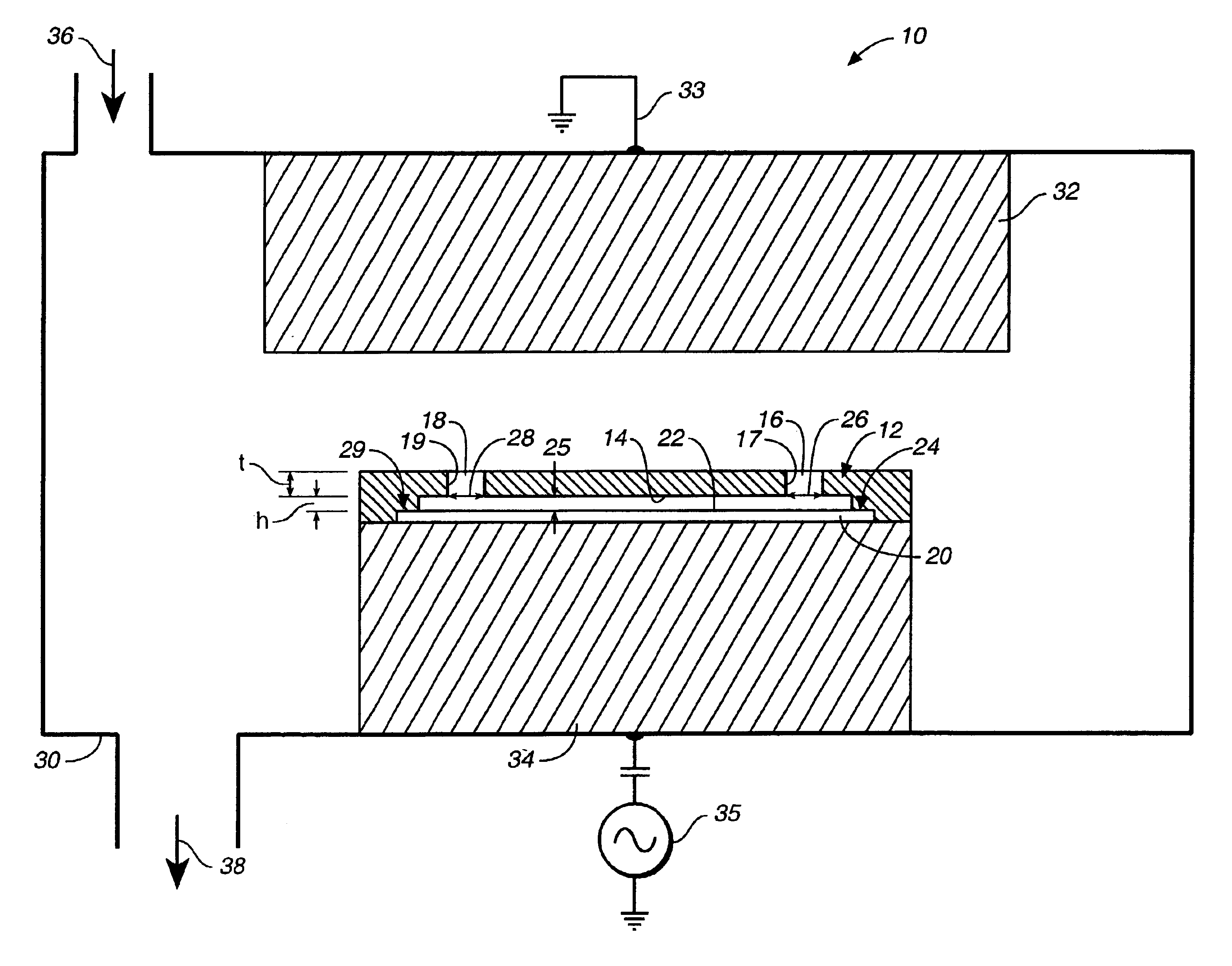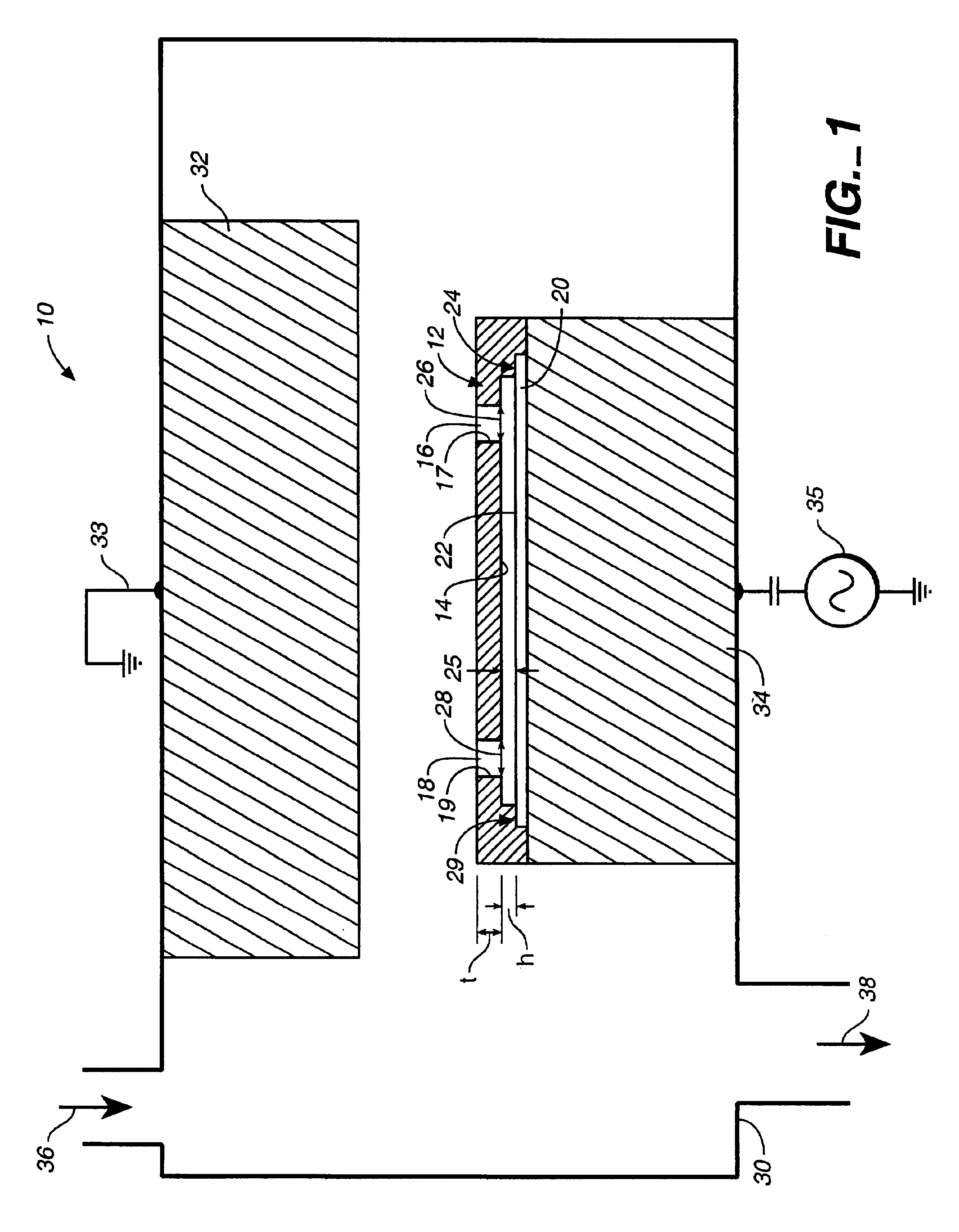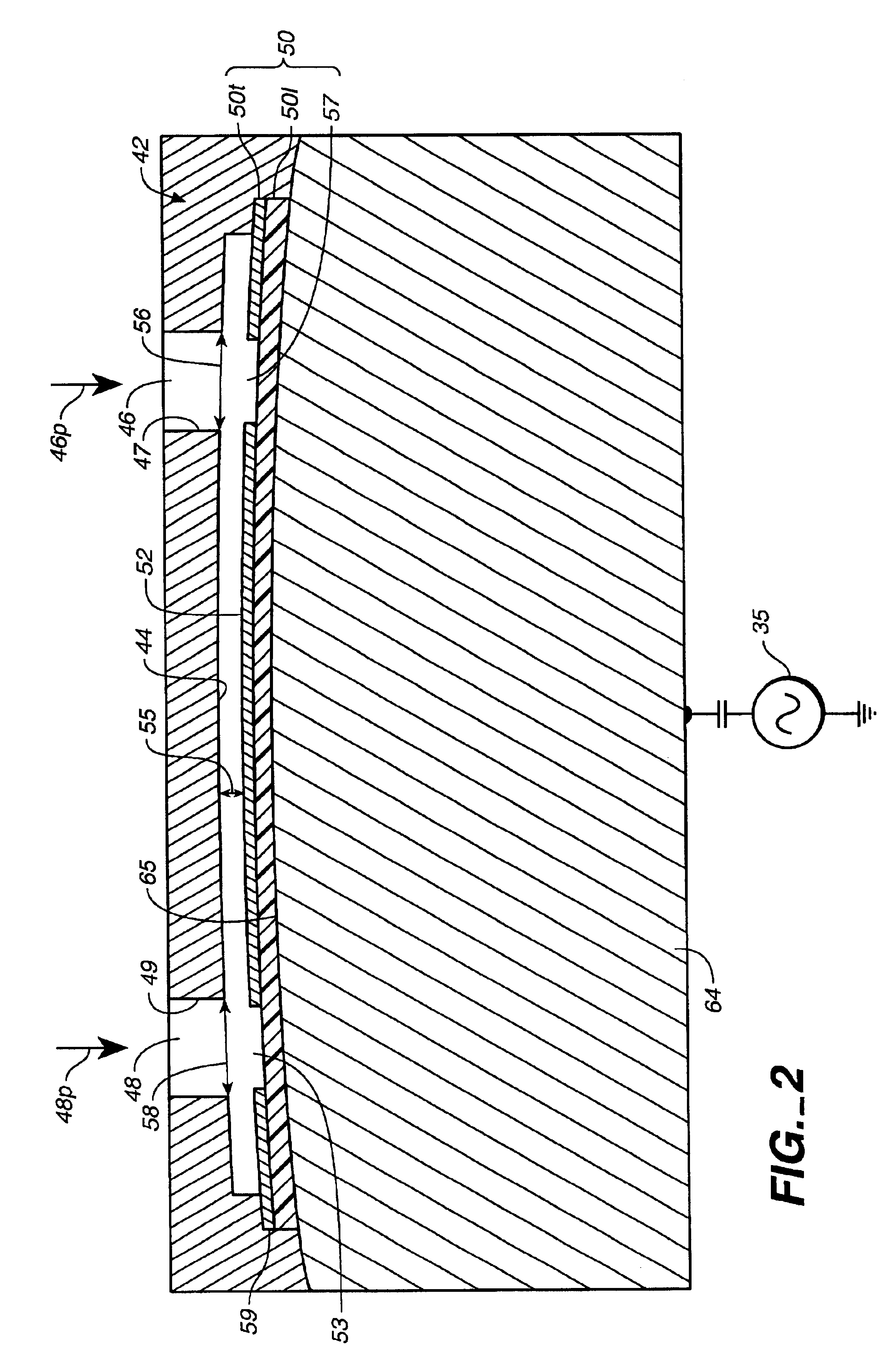Confinement device for use in dry etching of substrate surface and method of dry etching a wafer surface
a technology of confinement device and substrate, which is applied in the direction of electrical equipment, electrical discharge tubes, decorative arts, etc., can solve the problems of difficult dielectric etching, difficult to develop an optimized etching process that simultaneously clears, and undesirable non-planarity for subsequent photolithography patterning steps
- Summary
- Abstract
- Description
- Claims
- Application Information
AI Technical Summary
Benefits of technology
Problems solved by technology
Method used
Image
Examples
Embodiment Construction
The preferred system 10 in FIG. 1 can be used for dry etching an integrated circuit (IC) wafer substrate. Arranged within the vacuum etching chamber (defined, schematically, by the block labeled 30) is a mechanically clamped chuck 34 for supporting wafer substrate 20, over which a lower surface 14 of preferred confinement device 12 has been positioned. At the shelf-areas identified and labeled 24 and 29 on the sectional view in FIG. 1, it is apparent that device 12 is in contact with the perimeter of substrate 20. In the event substrate 20 is an IC wafer, its perimeter will be circular as will be the contact shelf-area (24 / 29) of device 12.
As designed and unlike known dry etching systems and apparatuses, it is critical that gap-spacing 25 between lower surface 14 and top surface 22 of substrate 20 be such that a hollow cathode discharge can form within the channels 18 and 16 (and may extend slightly below) but will not otherwise form within the spacing 25. For this to happen, the ch...
PUM
| Property | Measurement | Unit |
|---|---|---|
| Length | aaaaa | aaaaa |
| Length | aaaaa | aaaaa |
| Thickness | aaaaa | aaaaa |
Abstract
Description
Claims
Application Information
 Login to View More
Login to View More - R&D
- Intellectual Property
- Life Sciences
- Materials
- Tech Scout
- Unparalleled Data Quality
- Higher Quality Content
- 60% Fewer Hallucinations
Browse by: Latest US Patents, China's latest patents, Technical Efficacy Thesaurus, Application Domain, Technology Topic, Popular Technical Reports.
© 2025 PatSnap. All rights reserved.Legal|Privacy policy|Modern Slavery Act Transparency Statement|Sitemap|About US| Contact US: help@patsnap.com



